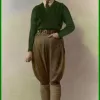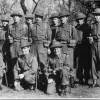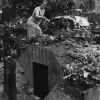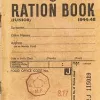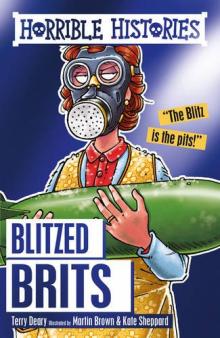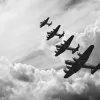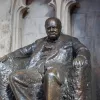TheSchoolRun.com closure date
As we informed you a few months ago, TheSchoolRun has had to make the difficult decision to close due to financial pressures and the company has now ceased trading. We had hoped to keep our content available through a partnership with another educational provider, but this provider has since withdrawn from the agreement.
As a result, we now have to permanently close TheSchoolRun.com. However, to give subscribers time to download any content they’d like to keep, we will keep the website open until 31st July 2025. After this date, the site will be taken down and there will be no further access to any resources. We strongly encourage you to download and save any resources you think you may want to use in the future.
In particular, we suggest downloading:
- Learning packs
- All the worksheets from the 11+ programme, if you are following this with your child
- Complete Learning Journey programmes (the packs below include all 40 worksheets for each programme)
You should already have received 16 primary school eBooks (worth £108.84) to download and keep. If you haven’t received these, please contact us at [email protected] before 31st July 2025, and we will send them to you.
We are very sorry that there is no way to continue offering access to resources and sincerely apologise for the inconvenience caused.
Life during World War II
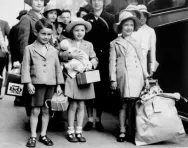
British people who weren’t fighting in World War II still had a very different life to the one they had before the war. For one thing, there wasn’t as much food around so every little bit had to be saved and used – even if it didn’t taste very nice! And clothes that were too small or had tears in them just had to be fixed and made bigger because there weren’t many new things around to buy. Everyone had to help each other get the things they needed to keep warm and healthy.
Many people – especially children – who lived in cities were evacuated to the country to keep safe from air attacks such as the Blitz.
Bombs dropped by German planes could flatten brick houses in seconds. Can you imagine going to school one morning, and coming back to find your house was gone? Or when packing your rucksack, popping in a gas mask to protect yourself in case of a gas attack?
Farms in the country became busy communities of people who moved in to help use every bit of the land to grow food. They might have moved there because they didn’t have a home anymore, or because they just wanted to help out as much as they could.
Top 10 facts
- During World War II, Britain was called ‘the Home Front’ – the war affected people not just fighting in armies on the front lines, but back in their own towns and neighbourhoods.
- All the different plans and ways to help get Britain through World War II was called ‘the war effort’. Helping the war effort meant anything from planting vegetables to making fighter planes.
- Because Britain was at war, it wasn’t easy to get food and other supplies anymore. In 1940, a system called rationing was set up which made sure that everyone had a fair amount of food, clothes and things like soap and petrol based on what was actually available. Rationing didn’t end until 1954.
- Land Girls were women from all over Britain who worked on farms, helping to grow and produce food for the rest of the country.
- Not all men went to fight overseas – some couldn’t go and instead joined the Home Guard, which was made up of volunteers ready to defend Britain from a surprise enemy invasion. The Home Guard was created in 1940.
- From September 1940 to May 1941, Britain was bombed heavily by enemy planes. That time is called ‘The Blitz’.
- During the Blitz, it was very dangerous to live in cities because that’s where most of the bombs were dropped. So, many children were sent off to live in the country where it was safer. These children were known as ‘evacuees’.
- People could protect themselves from enemy attacks by having a gas mask that would allow them to breathe clean air no matter how dirty or poisonous the air around them was after a bombing.
- Loud sirens would let people know that a bomb might go off soon, and that they should run to the nearest air-raid shelter. Bomb shelters were small, strong structures, sometimes put underground, that protected people inside from being hurt during explosions.
- When Prime Minister Winston Churchill announced that the war was over on VE Day, people all over Britain celebrated by holding street parties.
Timeline
- 1 September 1939Germany invaded Poland
- 3 September 1939The UK and France declared War on Germany
- 10 May 1940Winston Churchill became Prime Minister of Britain, taking over from Neville Chamberlain
- 14 May 1940The Home Guard was created (The Local Defence Volunteers)
- 26 May-4 June 1940The evacuation of British and French troops from Dunkirk, France June 1940 – German troops occupied the Channel Islands
- 10 June 1940Italy declared war on Britain and France, and allies with Germany
- 10 July-31 October 1940The Battle of Britain
- 7 September 1940The Blitz begins in London
- 8 September 1941-27 January 1944The Siege of Leningrad
- 7 December 1941The Japanese attacked an American naval base at Pearl Harbor, Hawaii
- 8 December 194The United States declared war on Japan, and joined with the Allies
- 6 June 1944D-Day, when troops from Britain and the US landed in France to fight against the Germans
- 16 December 1944-25 January 1945The Battle of the Bulge
- 8 May 1945VE Day (Victory in Europe Day), when Germany surrendered
- 15 August 1945VJ Day (Victory in Japan Day), when Japan surrendered
- 2 September 1945Japan formally surrendered, and officially ended World War II

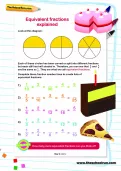
Boost Your Child's Learning Today!
- Start your child on a tailored learning programme
- Get weekly English & maths resources sent direct to your inbox
- Keep your child's learning on track
Did you know?
- The Land Girls were part of the Women’s Land Army, which started in World War I but is best known for their work during World War II. One job that the Land Girls had was to kill rats, who were responsible for eating 2 million tonnes of food every year!
- The Home Guard was first called the Local Defence Volunteers.
- ‘Blitz’ is the German word for ‘lightning’.
- When an attack is made by planes (so, instead of troops in tanks or ships), it is called an air-raid. During the Blitz, Britain was attacked by air-raids.
- Air-raid shelters were usually about as big as a garden shed. In fact, some are used as garden sheds today!
- Sweets and treats were hard to get during the war. Children would eat carrots on sticks instead of ice lollies! The only sweets that weren’t rationed during the war were cough sweets.
- Rationing continued until 1954 – nine years after World War II ended!
Pictures of life during World War II
Have a look through the images in the gallery and see if you can spot the following:
- The uniform that Land Girls wore
- A poster asking men to join the Army
- A group of Home Guard members
- An underground air-raid shelter
- A ration book
Gallery
About
When most of the men in Britain went off to fight in the war, women stepped in to do some of the jobs left vacant. One of these groups was the Land Girls, who worked on farms to grow food, look after livestock and keep the buildings and grounds in good shape.
Not all the men could go overseas, though. Some were just too old or too young, and others had jobs that were thought to be too important for them to leave – these were called ‘reserved occupations’, and included farmers, coal miners and ship builders. Men who stayed in Britain could join the Home Guard, whose main job was to defend the land if there were a sudden attack by the enemy, holding them off until soldiers could get there. There never was an attack like this, but what members of the Home Guard did do was watch over important resources like factories that might have been key targets of an attack, and places like dark fields where enemy troops might parachute into thinking that nobody would see them land. The Home Guard also captured enemy pilots whose planes had crash-landed. The Home Guard was formed in 1940 and disbanded in 1945, and over 1 million men were part of it for most of this time.
Lots of things that people used to be able to pick up in shops around the corner weren’t available during the war. For instance, a factory that used to produce clothes would have been reassigned to produce items for the troops instead. Also, foods like bananas that would have come in on ships from other countries were unavailable because it was dangerous for ships to bring food to Britain. Convoys of ships were used to bring essential food items from other countries but many of these ships were destroyed by the Germans before they could get to Britain.
A system called rationing was set up in 1940 that restricted how much food, clothes and other supplies people could have in a week or month. Each person – both children and adults – had a ration book with coupons in it that they’d hand over to their local shopkeeper, who would give them items their coupons allowed them to have. This system meant everyone got something to eat, and something to wear, even if it wasn’t very much.
The first foods that were rationed were bacon, sugar, tea, butter and meat. This list grew and grew as the war went on, and people got used to making each little bit stretch as far as possible. For example, today you could go out and buy as a dozen eggs and as much milk as you like. But back in war time, people were allowed just one egg per week and three pints of milk per month! People could grow and eat as many vegetables as they wanted, so gardens of all sizes popped up wherever there was space for one – even in parks. Rationing carried on after the war was over because supplies were still low, but gradually items came off the rationing list so things were never as restricted as they was during the war. Rationing ended for good in 1954.
The Blitz lasted from September 1940 to May 1941. During this time, Britain was bombed very heavily in a number of air-raids. Major cities (like London), factories and seaside towns were all targeted because bombing them would cause the most damage – such as destroying rows of houses, production of weapons, or ports where ships carrying supplies would come to.
Loud air-raid sirens would warn people that enemy planes were on the way, and they would need to run to the nearest shelter – no matter if it were the middle of the day or night. Some people had Anderson shelters buried in their back garden, or Morrison shelters in their home. These were strong structures that were built to protect people inside from bomb explosions. In London, Tube (underground) stations were used as air-raid shelters too. Many people also owned gas masks that they could wear to breathe clean air after an explosion.
Because living in cities was so dangerous, mums and dads decided to send their children to the country. These children were called evacuees. This was a really hard decision because nobody wanted to say goodbye to their families, but it was the best way to make sure children stayed safe – nobody knew when the war would finally be over. Many children travelled by train to farms, to homes in the country or to large, stately homes that had lots of room. Some British children even went overseas to countries like Canada. They would write letters about their new adventures to their parents.
Related Videos
Just for fun...
- Try to ‘make do and mend’! What would you add to or take away from the clothes for this paper doll?
- Complete some Home Front activities and learn all about life in Britain 1939-1945
- Understand more about rationing with games and flashcards
- Imagine you’re an evacuee. What would you write about your experience in a letter to friends and family?
- Make a list of what you’d take into an air-raid shelter
- Find out about life in the Cabinet War Rooms
- Cook some war-time recipes! Do you fancy Cheesy pudding pie? Or baked jam and carrot sponge pudding? Or sardines wrapped in potato?
- Become a spy and gather information about life in Scotland during WWII
- Listen to and watch WWII audio-visual clips from a huge archive including key speeches, eye-witness reports and some of the most evocative sounds of the War on the BBC Schools Radio site
- Remember VE Day, 7 May 1945, with English Heritage VE activities for children: learn to dance the Lindy Hop, popular in the 1940s, download a VE Day Spotify music playlist, make ginger beer and carrot scones
- Download a VE Day kids' activity pack, with puzzles and recipes, from Royal British Legion Industries (RBLI)
See for yourself
- Visit the Imperial War Museum in London to see what life was like for a family living in Britain during World War II
- At the Churchill War Rooms in London you can see Churchill’s statesmanlike wooden armchair – still visible in its wellworn armrests are the marks clawed by Churchill’s fingernails
- Learn more about the Land Girls at Gresswell Farm and Workhouse
- Visit Chislehurst Caves in Kent, one of the largest deep air-raid shelters in the country which protected over 15,000 people at the height of the Blitz
- Look at WWII posters and propaganda
- Find out about Operation Dynamo, the May 1940 evaculation of Dunkirk in WWII, at Dover Castle
- See photographs of life during the Blitz
- Find out about WWII spies and their operations by taking a walk in London and using the free app Spooks, Spies and Videotape – London's Secret War
Best children's books about life during WWII
Find out more
- Find out about the Women’s Land Army
- Kids' fiction about WWII: read stories to find out more about the period
- Sir Nicholas Winton saved the lives of 669 children by arranging their evacuation from Nazi-occupied Prague in 1939. His daughter Barbara Winton tells his story in a BBC School Radio programme for children aged 7 to 11
- Look at objects from WWII
- Find out more about WWII weapons like doodlebugs and V2s
- What was life like for children who were evacuated?
- See a map of how London was bombed during the Blitz
- Read a story of extraordinary bravery in east London during WWII
- Find out about the products (chocolate, tights and more!) that America soldiers, G.I.s, brought with them when they came to Britain in a Horrible Histories song
